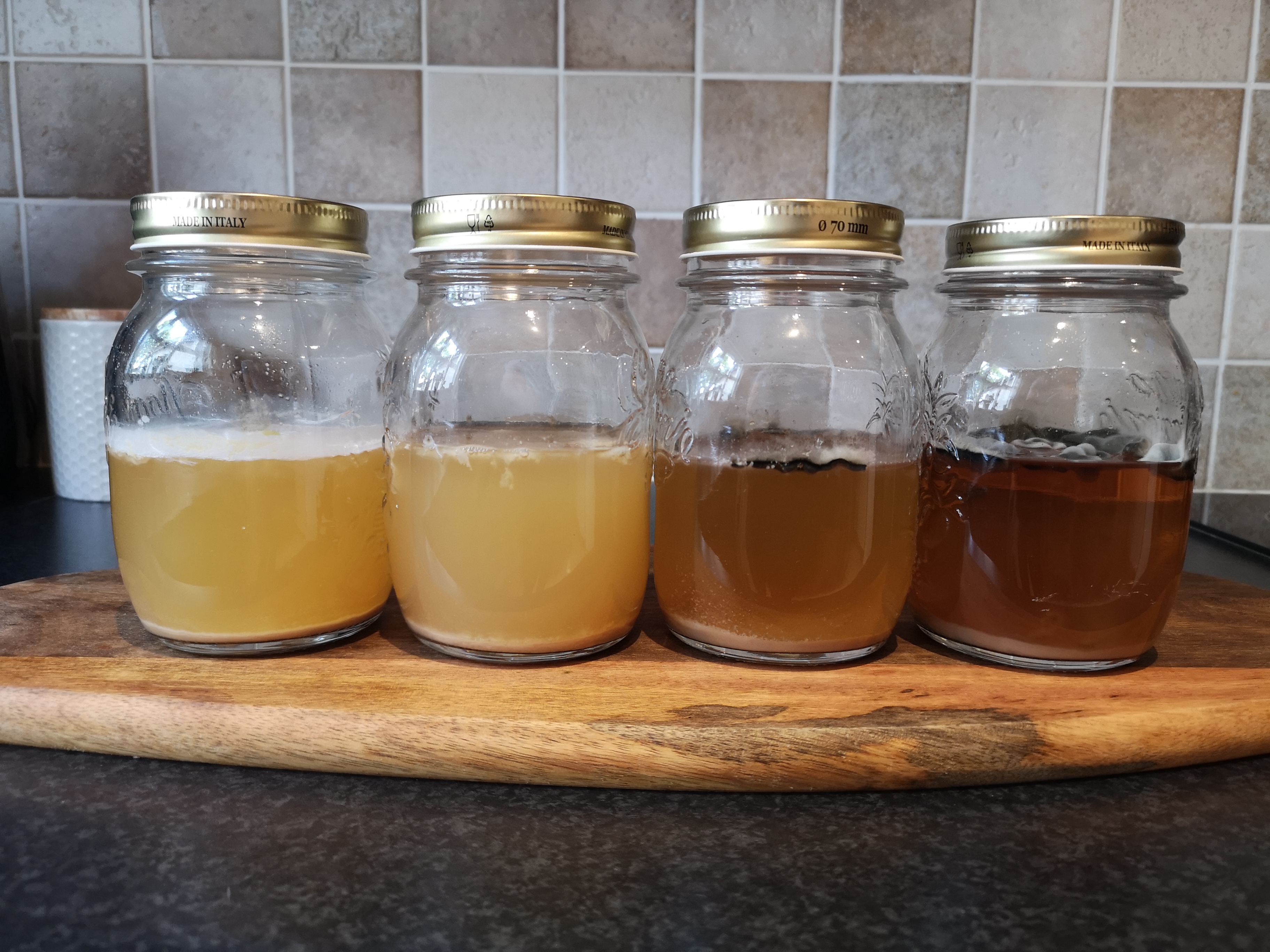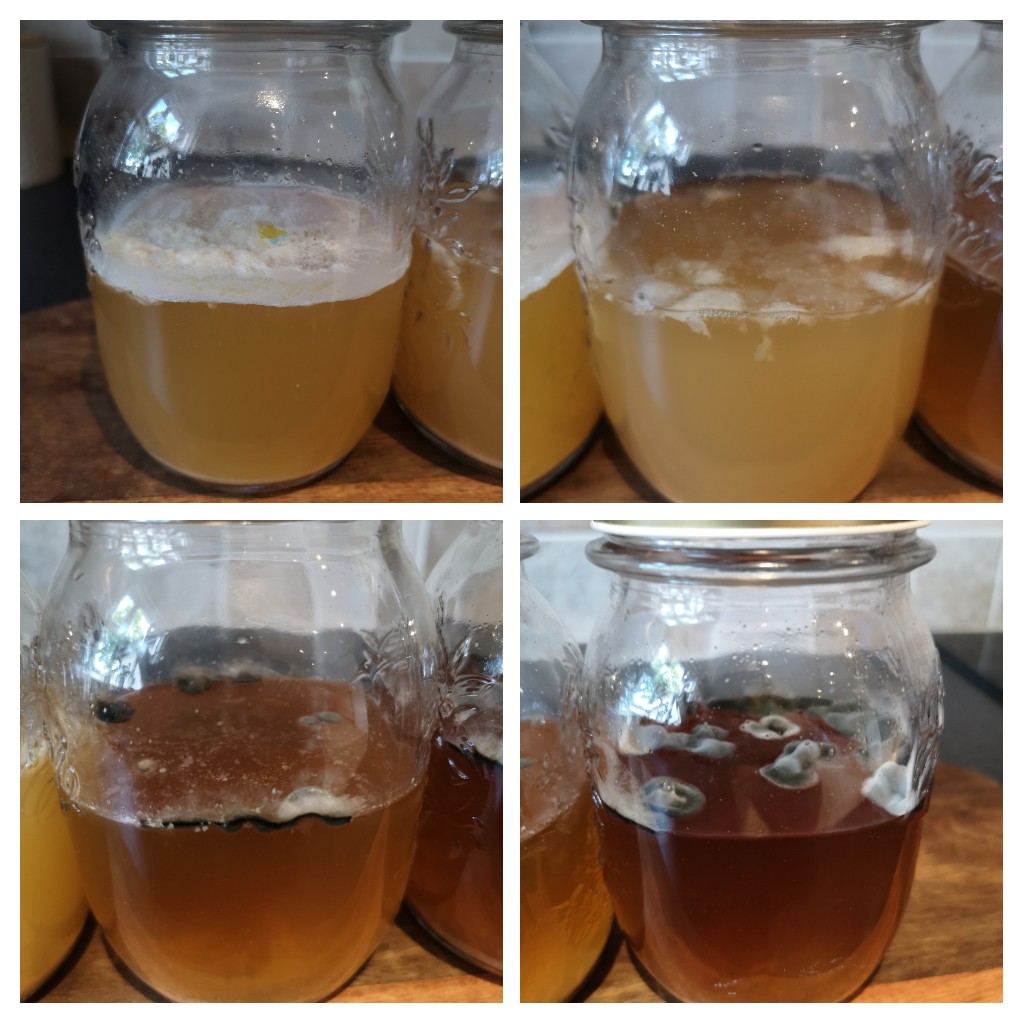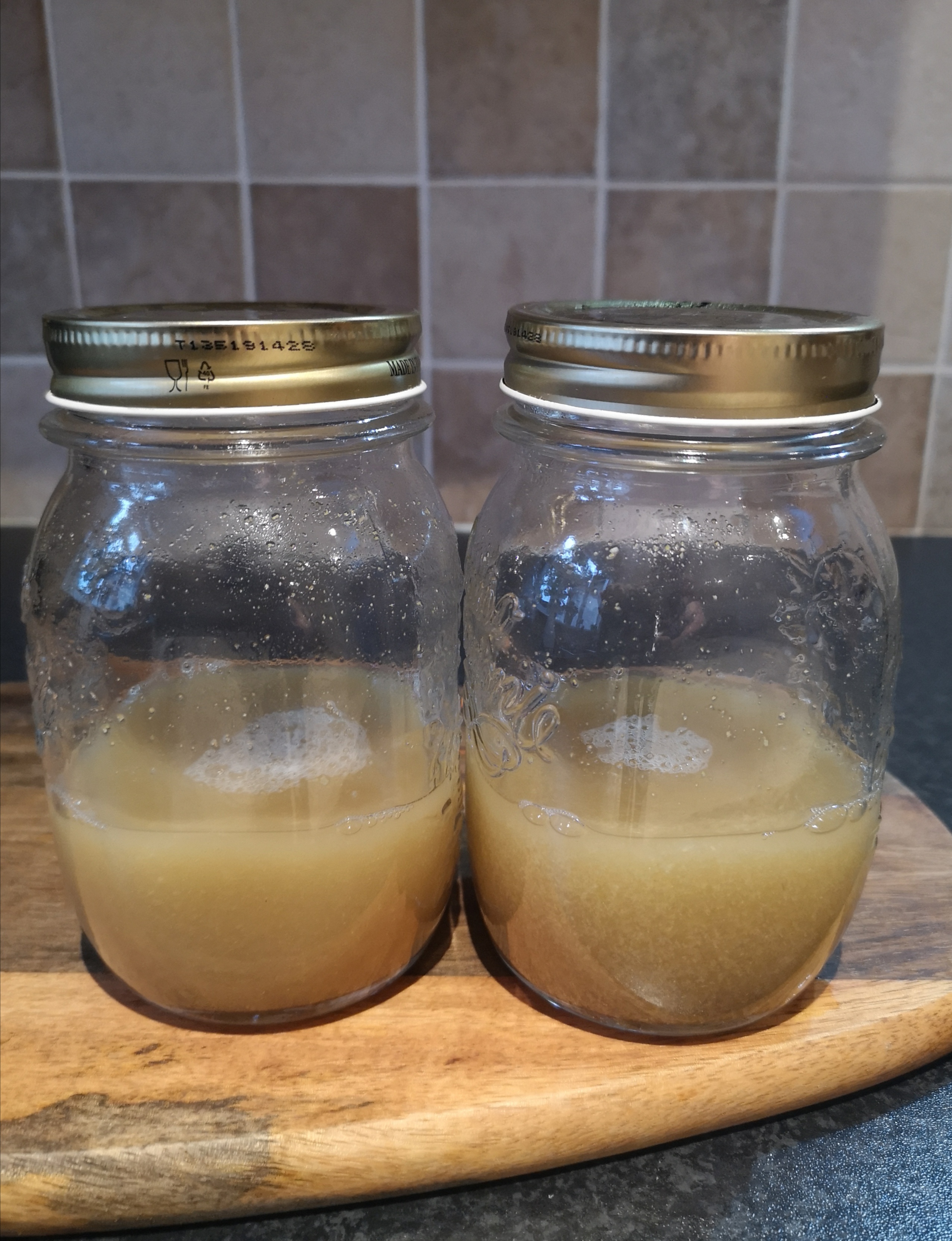Funk update!
I had a taste of SponTooting today and as
@Sadfield suggested I was pretty nervous! There’s a slightly earthy funk in the aroma, but the taste is pleasantly sweet and lemony, a little tart and no dirty flavours. So it’s a goer! I’ll top the DJ up to the neck tonight and leave it to fully ferment out, I didn’t check the gravity today.
Today I’m brewing my third annual ‘Belgian style sour beer’. Last year I did a turbid mash, couldn’t be bothered this year so I added the grains when the water was at 50C then continued heating, did a long mash at 68C followed by a hot sparge. Currently in the two hour boil with aged hops. I’m going to pitch a pale ale yeast for a few days and I have a built up culture of Cantillon dregs to pitch later. That beer was extremely sour and not a lot of Brett character but given the sourness is restrained in the last two years’ vintages, it should blend well next year.
Finally, I decided to make a funky cider, with cloudy apple juice from Lidl, tea for tannin and WLP650 Brett Bruxellenis. Will see how it turns out!











































